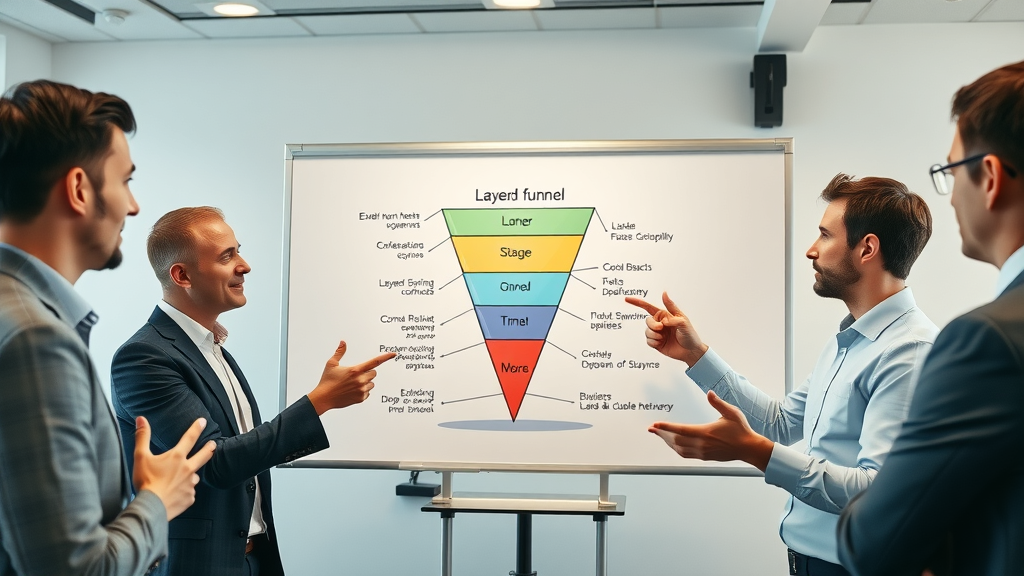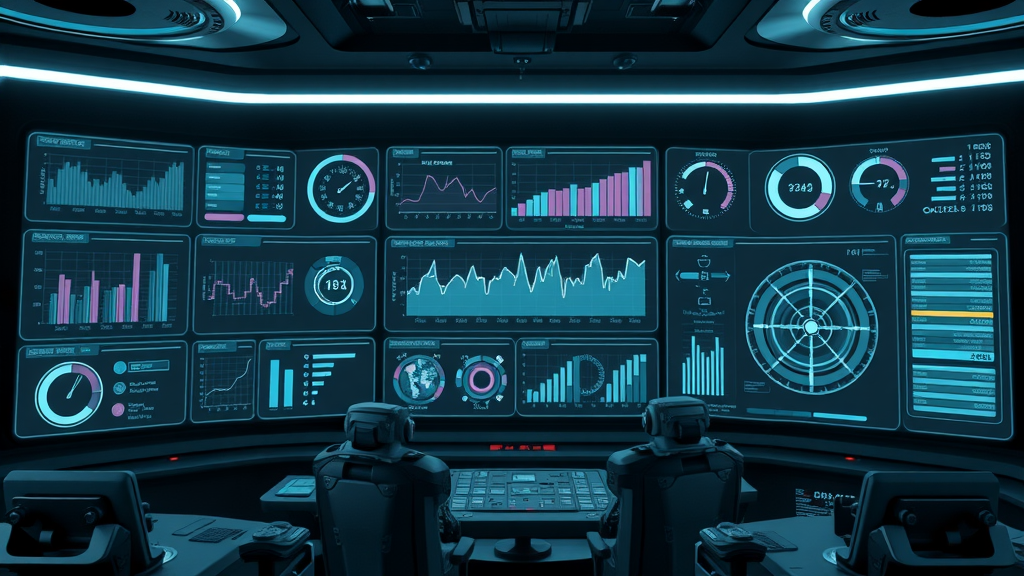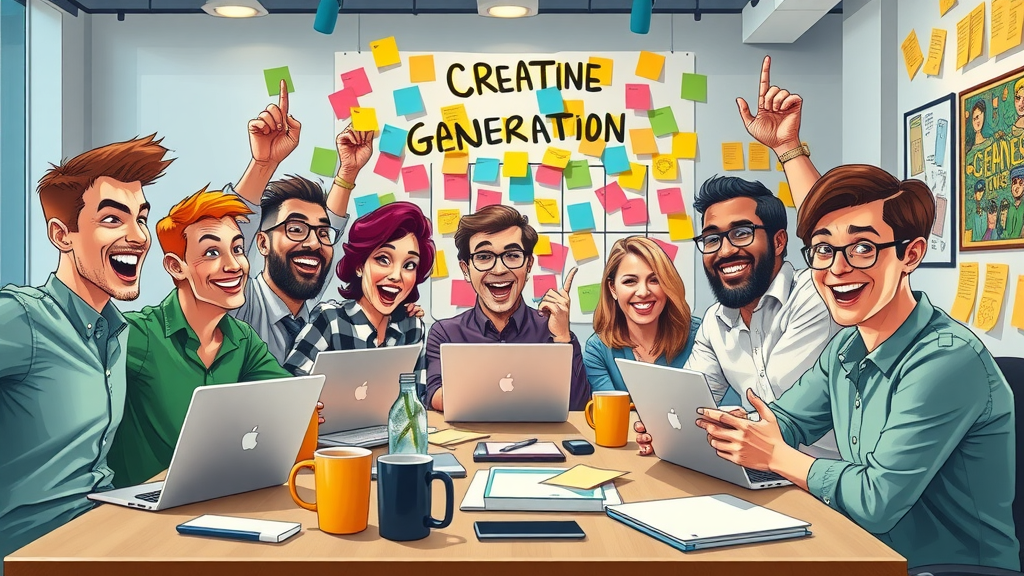What if you could triple your conversion rates overnight ? Companies who prioritize conversion funnel optimization can see up to 300% higher conversion rates than their competitors. If you’re looking to stop losing sales and start turning site visitors into paying customers fast, this guide is for you.
Unlocking Explosive Growth: The Power of an Optimized Conversion Funnel
- Did you know that companies with a fully optimized conversion funnel can see conversion rates rise by up to 300%?

A well-optimized conversion funnel isn’t just a buzzword—it's your blueprint for transforming casual website visitors into loyal, paying customers. Imagine increasing your conversion rates dramatically simply by refining how customers move through your funnel stages. This powerful growth lever is available to businesses of all sizes, once you know what steps to take and how to strategically monitor each funnel stage .
Optimizing your conversion funnel means fewer missed opportunities and improved return on every marketing effort. Studies suggest strategic improvements in funnel analysis can significantly boost the effectiveness of marketing campaigns, slashing wasted spend and elevating customer experience at each phase. When you align your approach with clear funnel analysis and actionable steps, you set your company up for explosive, measurable business impact.
Mastering the Conversion Funnel: A Roadmap for Rapid Customer Acquisition
- In this guide, you’ll learn how to master every stage of the conversion funnel, enhance your customer journey, apply actionable funnel analysis, and optimize conversion rates for instant business impact.
Understanding and optimizing the conversion funnel is crucial for businesses determined to expand customer acquisition at lightning speed. The conversion funnel acts as a bridge between your site visitors and desired action—whether that’s making a purchase or contacting your team. To see results fast, your task is to fine-tune every funnel stage , ensuring you’re leading potential customers from awareness to action without unnecessary friction.
Throughout this comprehensive guide, you’ll learn how to break down each component of the conversion funnels journey map, identify and fix leaks, and use proven funnel analysis tools. We'll share actionable tactics for funnel optimization at each phase, real-world examples, practical lists, and data-driven insights to help you excel. By following these steps, you'll be equipped to continually improve your customer journey and drive consistent sales growth—starting today.
What is a Conversion Funnel?
- Definition of a conversion funnel and its critical role in business growth.
- Comparison with terms like sales funnel, marketing funnel, and how they connect.

A conversion funnel is a strategic framework that visualizes how potential customers move from their first interaction with your business (awareness) through to taking a desired action —such as making a purchase or signing up for a newsletter. By mapping this journey, you can understand, track, and optimize the steps site visitors take as they progress through each crucial funnel stage toward becoming paying customers .
While you might hear related terms like “ sales funnel ” or “ marketing funnel ,” these are variations of the same foundational idea. The marketing funnel often emphasizes lead generation and nurturing, while the sales funnel zooms in on the closing stages of the customer journey. Ultimately, the conversion funnel ties these concepts together, providing a holistic view of how leads flow from the top of the funnel (TOFU) down to the critical moments of conversion and retention.
By clearly defining and analyzing your conversion funnel , you gain the blueprint to reduce pain points , improve each funnel stage , and seamlessly convert site visitors into delighted paying customers . Businesses that treat the conversion funnel as a living, flexible strategy—not a rigid process—unlock the ability to swiftly adapt to changing customer needs and market dynamics.
The Importance of Funnel Analysis for Conversion Success
- How funnel analysis empowers businesses to identify leaks and optimize each conversion funnel stage.
- Key benefits of data-driven funnel analysis for maximum conversion rates.
“Without effective funnel analysis, improving your conversion funnel is little more than guesswork.”

Funnel analysis is the systematic examination of how users move through your conversion funnel —and where they drop off before making a desired action . By dissecting each funnel stage , this process highlights exactly where you’re losing potential customers and uncovers the reasons why. With these actionable insights, you transform your optimization efforts from random trial-and-error into smart, targeted improvements.
The major power of funnel analysis lies in its ability to drive data-driven decision-making. Instead of relying on hunches, marketers can pinpoint which areas of the customer journey require urgent fixes. For example, if a large percentage of users abandon their cart at checkout, funnel analysis immediately shines a spotlight on that stage. The outcome? You not only boost your conversion rates but also improve user experience and build long-term brand loyalty by solving genuine customer pain points.
Smart companies perform regular funnel analysis , aligning their marketing campaigns, website updates, and sales tactics around the findings. This ongoing process creates a growth engine—fueling faster lead-to-customer turnarounds and keeping you well ahead of competitors regardless of your industry.
Mapping the Customer Journey Through Your Conversion Funnel
- What is a customer journey and why is it integral to your conversion funnel?
- Overview of a customer journey map: Visualizing funnel stages and touchpoints.
- Best practices for creating a customer journey map that enhances conversion funnels.

The customer journey describes the complete experience your site visitors have with your brand—from their first exposure right through to becoming a loyal customer. Mapping this journey is essential to truly understand the feelings and actions of your potential customers at every funnel stage . A well-crafted customer journey map visually connects each conversion point with the precise touchpoints—ads, blogs, social media, product page visits—that impact their decisions.
Creating a user-focused journey map lets you spot where prospects get frustrated, disengaged, or prompted to move forward. Typically, this map mirrors the classic conversion funnel stages: awareness, interest, decision, and action, aligned with the emotions and questions that arise along the way. With a journey map, you aren’t guessing what your customers want—you’re building an optimized funnel directly around it.
Best practices for developing a customer journey map include: using analytics to track real behavior, involving cross-functional teams for diverse perspectives, and updating frequently as user expectations evolve. By visualizing and addressing these key funnel stages , you lay the groundwork for a more intuitive, higher-converting customer experience—and gain a critical competitive edge.
| Funnel Stage | Customer Actions | Emotions | Key Touchpoints |
|---|---|---|---|
| Awareness | Sees social media ad, lands on blog | Curious, skeptical | Ad, blog post |
| Interest | Subscribes to email, downloads guide | Interested, cautious | Lead magnet, email |
| Decision | Compares products, reads reviews | Confident, analytical | Product page, review site |
| Action | Completes purchase, joins loyalty program | Excited, assured | Checkout, email confirmation |
Conversion Funnel Stages: Understanding Each Critical Point
- Detailed breakdown of each conversion funnel stage (awareness, interest, decision, action).
- Real-world examples of effective funnel stage strategies.
Every conversion funnel consists of several core funnel stages , each representing a critical checkpoint on the journey from site visitor to paying customer. These classic stages are:
- Awareness: The moment your target audience encounters your brand. This could be via a social media campaign, an organic search result, or a referral.
- Interest: After piquing their curiosity, visitors seek more information—signing up for emails, viewing your blog, or comparing features.
- Decision: Here, the site visitor weighs their options, reviews the product page, and considers pricing or additional perks.
- Action: The prospect takes your desired action, such as making a purchase or completing a contact form—becoming a paying customer.
Effective marketing funnels tailor strategies for every funnel stage. For example, top of the funnel efforts might use attention-grabbing blog content or viral social media posts to drive initial awareness. In the interest phase, nurturing content like email drip campaigns or how-to videos keeps leads engaged. At the decision point, detailed and persuasive product page content, testimonials, or time-limited offers can reduce hesitation and prompt action.
By breaking down and optimizing each stage of the funnel , businesses make it easier for users to move forward, leading to consistently higher conversion rates and fewer lost opportunities at each step along the way.
Optimizing Your Conversion Funnel for Maximum Results
- Tactics for conversion funnel optimization at every funnel stage.
- Conversion funnel optimization vs general funnel optimization: Key distinctions.

To drive outstanding results, conversion funnel optimization requires precise, data-backed adjustments at every funnel stage . This goes beyond generic optimizations—here, you prioritize fixes where they have the highest impact on conversion rates. For instance, boosting top-of-the-funnel awareness through targeted social media campaigns or solidifying bottom-of-the-funnel confidence with money-back guarantees and seamless checkout flows.
What sets conversion funnel optimization apart from general funnel optimization ? The focus here is on the customer’s journey to a specific desired action , not just lead or traffic generation. This means refining the timing and placement of CTAs, personalizing communications, shortening forms, and removing bottlenecks that frustrate users at any stage.
Actionable tactics include A/B testing product pages and checkout layouts, optimizing for mobile, tightening up site speed, leveraging retargeting ads, and automating personalized follow-ups. The key distinction: conversion funnel optimization is relentless about transforming site visitors into paying customers, creating sustained revenue growth versus just expanded reach.
Funnel Analysis: Tools and Metrics for Conversion Funnels
- Popular funnel analysis tools for tracking and refining the customer journey.
- Essential metrics: conversion rate, drop-off rate, and funnel stage analysis.

Tracking your conversion funnels requires reliable funnel analysis tools—these platforms help visualize every touchpoint, measure drop-off rates at each funnel stage, and report on critical metrics like conversion rate and customer lifetime value. Popular choices include Google Analytics, Hotjar, Mixpanel, and HubSpot, each offering unique strengths for different business needs.
Key funnel analysis metrics to monitor are:
- Conversion rate: The percentage of visitors moving from one stage of the funnel to the next.
- Drop-off rate: Where and how many users abandon the funnel, pinpointing friction points.
- Funnel stage analysis: Tracking how long users spend at each stage and their behaviors along the journey.
Investing in the right analytics is a non-negotiable step to optimizing every aspect of your customer journey and ensuring your marketing campaigns achieve their desired impact faster and more efficiently.
| Tool | Strengths | Best For |
|---|---|---|
| Google Analytics | Free, robust, customizable funnels, wide adoption | General conversion funnel tracking |
| Mixpanel | In-depth behavioral analysis, cohort tracking | SaaS, eCommerce, user-centric apps |
| Hotjar | Visual journey mapping, heatmaps, user recordings | UX/UI improvement, identifying pain points |
| HubSpot | Integrated sales, marketing, automation features | B2B, lead gen, nurturing conversion funnels |
Conversion Funnel Metrics: Achieving High Conversion Rates
- How to measure and interpret conversion rates at each funnel stage.
- Setting KPIs that align with funnel optimization goals.

To achieve high conversion rates , it’s essential to consistently measure outcomes at each stage of your conversion funnel . Start by setting clear Key Performance Indicators (KPIs) for every funnel stage : define what success looks like for awareness (e.g., email sign-ups), interest (engagement rates), decision (add-to-cart), and action (completed purchase).
Regularly calculate conversion rate as the percentage of users progressing to the next step versus total entrants at that stage. For example, if 1,000 people visit a product page and 100 add an item to their cart, your interest-to-decision rate is 10%. Monitor these metrics over time and adapt your funnel optimization strategies to address any weak points or stalls.
Aligning KPIs with overall business and marketing goals is vital. When your conversion funnel KPIs are clear, every team—sales, marketing, product—can work together to optimize the customer experience and further streamline the path from prospect to loyal customer.
Reducing Cart Abandonment and Shopping Cart Bottlenecks
- Key causes of cart abandonment in the conversion funnel.
- Techniques to optimize your funnel and increase completion rates from the shopping cart stage.

Cart abandonment is one of the most persistent obstacles in the conversion funnel , with studies showing that up to 70% of shoppers leave without completing their purchase. Common causes include unexpected costs, complicated checkout processes, unclear return policies, or a lack of trust signals. These pain points often arise at the decision or action stages, derailing what should be a seamless progression to becoming a paying customer.
To reduce cart abandonment , streamline the checkout process—simplify forms, offer guest checkout options, display clear security badges, and ensure site speed is optimized. Consider deploying cart abandonment emails or push notifications to gently nudge shoppers back and reinforce the value of your product or service . Addressing questions and objections with real-time support and transparent pricing can also significantly increase your funnel’s completion rates.
By optimizing the shopping cart experience and continually refining this critical funnel stage, businesses can drive more users to complete their purchases, strengthening every other aspect of the conversion funnels and maximizing revenue growth in the process.
Conversion Funnel Optimization: Proven Strategies to Boost Sales Funnel Performance
- How improving the sales funnel impacts overall conversion funnel results.
- Tactical checklist: optimize your funnel from product page to purchase.
Enhancing every link within your sales funnel directly supercharges your overarching conversion funnel results. The sales funnel narrows in on the crucial mid-to-bottom funnel phases—nurturing warm leads through product page reviews, benefit-driven copy, and clear, compelling calls-to-action leading to quick checkouts and repeat business.
Use this tactical checklist to optimize your funnel from product page to purchase:
- Ensure product pages are visually appealing with clear messaging and trust signals.
- Provide live chat support and user-generated reviews for instant reassurance.
- Use exit-intent popups or limited-time offers to reduce cart abandonment.
- Personalize follow-up emails to re-engage abandoned carts with incentives.
- Test and iterate checkout forms, minimizing required fields for speed.
Remember, continuous funnel optimization is key: regularly review analytics, gather user feedback, and tweak your sales funnel tactics to align with evolving customer expectations and competitive benchmarks.
Top of the Funnel: Attracting and Engaging Qualified Leads
- Strategies for capturing attention at the top of the conversion funnel.
- Key content and touchpoints for increasing lead conversion rates.

At the top of the funnel , your goal is to attract high-intent potential customers with content that educates, intrigues, and invites further engagement. Effective tactics include search engine-optimized blog posts, viral social media challenges, guest articles, and value-packed lead magnets like eBooks or checklists. These touchpoints must resonate with your target audience ’s biggest pain points and be easily shareable for wider reach.
To maximize lead conversion rates , provide clear, irresistible calls-to-action—sign-up forms, free trials, or newsletter subscriptions—at every key entry point. Video content, interactive quizzes, or webinars can dramatically increase engagement, driving more qualified site visitors down to the next funnel stage.
The stronger your awareness-building strategies at the top of the funnel, the more qualified leads will seamlessly progress through your system, bolstering all subsequent funnel metrics and amplifying results from every marketing campaign.
Product Page Excellence: Driving Action in the Conversion Funnel
- Design and copy tactics for high-converting product pages.
- Real examples of product page elements that reduce funnel drop-off.

The product page is a make-or-break moment in your conversion funnel . High-converting product pages combine eye-catching images, persuasive copy, clear benefit statements, prominent CTAs, and social proof like user reviews. By ensuring your product pages are intuitive, visually appealing, and emotionally engaging, you eliminate much of the uncertainty that stalls users.
Proven elements to reduce funnel drop-off include: quick-to-scan bullet points, product demo videos, comparison tables, and mobile-friendly layouts. Display trust signals such as secure payment badges and guarantee seals, and make shipping information and return policies highly visible. Each feature is designed to anticipate and overcome objections, smoothing the site visitor’s path to a desired action .
Continuously test product page layouts, headlines, and images for performance, and leverage analytics to reveal what resonates most with your audience. As your core conversion hub, the quality of your product pages directly correlates with your funnel’s overall effectiveness.
Journey Map Applications: Elevating Every Funnel Stage
- Applying customer journey map insights to enhance each phase of the conversion funnel.
Leveraging insights from your customer journey map allows for targeted improvements at every phase of the conversion funnel . Use behavioral data to personalize user experiences—such as context-aware product recommendations, re-engagement messages timed to interest, or customized offers based on browsing history at the decision point.
These journey-driven applications not only elevate the customer experience but also proactively remove obstacles that might derail a potential customer's progress at any funnel stage. Regularly review and update your journey map to stay attuned to changing customer motivations, ensuring every marketing, sales, and product touchpoint is optimized for conversion success.
Ultimately, the ongoing integration of journey map learnings with funnel optimization tactics fuels both rapid experimentation and sustainable growth, helping you continuously outperform industry benchmarks.
People Also Ask
What is a conversion funnel?
- A conversion funnel is a framework that tracks and manages the process by which a potential customer progresses from awareness to taking a desired action , such as making a purchase, and helps businesses understand and optimize each step to maximize conversions.
How to build a conversion funnel?
- Building a conversion funnel involves mapping out the customer journey , creating touchpoints for every stage (awareness, interest, decision, action), analyzing performance with funnel analysis tools, and continuously optimizing content and user experience to increase conversion rates.
What is another word for conversion funnel?
- Other terms often used interchangeably with conversion funnel include sales funnel , marketing funnel , purchase funnel, and customer journey pipeline.
What are the stages of a conversion funnel?
- The classic stages of a conversion funnel are: Top of Funnel (awareness), Mid Funnel (interest and desire), and Bottom of Funnel (decision and action). Each funnel stage corresponds to different customer actions and needs.
Frequently Asked Questions About the Conversion Funnel
- What are the best tools for conversion funnel optimization? Leading tools include Google Analytics for funnel visualization, Mixpanel for behavioral tracking, Hotjar for heatmaps and user recordings, and HubSpot for all-in-one funnel analysis and automation.
- How often should you review your funnel analysis reports? Ideally, review funnel data weekly or monthly, adjusting cadence based on marketing cycles. After major campaigns or UX changes, analyze immediately to gauge the impact on funnel performance.
- What metrics indicate successful conversion funnels? Key metrics are high conversion rate between funnel stages, low drop-off rates, increasing customer lifetime value, and steady growth in paying customers and returning users.
- How does a journey map differ from a classic funnel analysis? While journey maps focus on emotional and experiential elements at each touchpoint, funnel analysis quantifies exactly where users advance or exit. Together, they offer a full understanding of both the “how” and “why” of customer behavior.
Maximizing Results in Your Conversion Funnel: Pro Tips and Next Steps
- Key takeaways for immediate application: prioritize funnel stage analysis, leverage customer journey maps, and regularly optimize your conversion funnel using the latest analytics and user feedback.
Activate Your Conversion Funnel: Accelerate Your Path to Customer Wins
- Ready to capture more customers fast? Start implementing advanced conversion funnel tactics today, and monitor your results to continuously elevate your business outcomes.
Act now: Analyze your funnel for leaks, apply journey map insights, and optimize every stage—fast-tracking more website visitors into loyal paying customers.
Sources
- Optimizely – https://www.optimizely.com
- Hotjar – https://www.hotjar.com
- Mixpanel – https://www.mixpanel.com
- HubSpot – https://www.hubspot.com
- Shopify – https://www.shopify.com/enterprise/conversion-funnel
To deepen your understanding of conversion funnels and their optimization, consider exploring the following authoritative resources:
- “What is a Conversion Funnel? A Guide to Each Stage” ( salesforce.com )
This comprehensive guide by Salesforce breaks down each stage of the conversion funnel, offering insights into how potential customers progress from awareness to action.
- “How to Optimize Your Conversion Funnel” ( mailchimp.com )
Mailchimp provides practical strategies for optimizing your conversion funnel, including industry-specific variations and techniques to enhance each phase of the customer journey.
By delving into these resources, you’ll gain valuable perspectives and actionable tips to refine your conversion funnel, ultimately boosting your customer acquisition and retention efforts.
 Add Row
Add Row  Add
Add 










Write A Comment